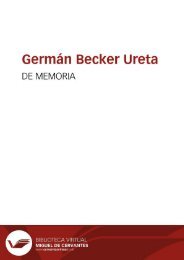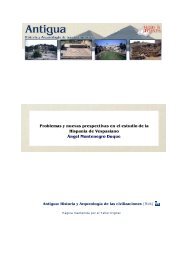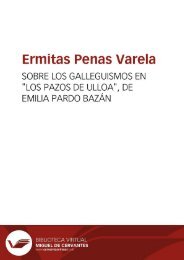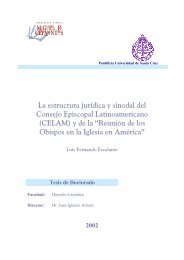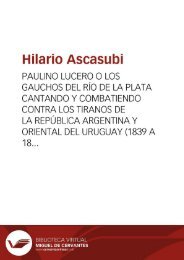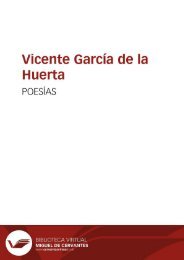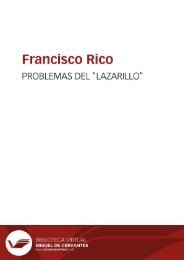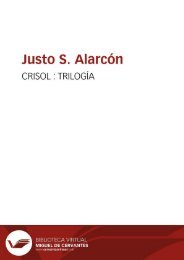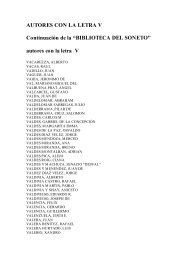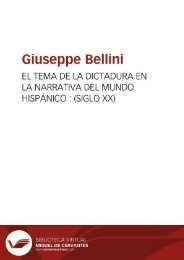Create successful ePaper yourself
Turn your PDF publications into a flip-book with our unique Google optimized e-Paper software.
Anales galdosianos [Publicaciones periódicas]. Año XII, 1977<br />
that image spatially; instead, it infuses the construct with meaning and delimits that meaning. It is<br />
a sign superimposed on another sign, which latter can no longer be perceived independently of its<br />
informing structure. In other words, the novel cannot be reduced to what the frame contains: a social<br />
portrait of late nineteenth-century Spain or the dialectic between thought and action. The story of<br />
Máximo Manso is bound by a structure that forces a wedge between the bourgeois reality of the inner<br />
novel and the reader's own bourgeois reality all the while as it passes sentence on bourgeois reality.<br />
The two-tiered structuring compels in the reader a critical awareness of what the novel is about and<br />
what the novel is.<br />
Roman Jakobson in a celebrated essay isolated the six factors that constitute a speech event:<br />
addresser, addressee, message, context, code, and contact 133 . Reading a novel can be considered<br />
a speech event. The function that language, or here the novel, takes on at any moment, explains<br />
Jakobson, depends on which of these elements is emphasized. In the bulk of El amigo Manso -<br />
in the interior novel- focus is on the message in its context, and so the novel's function is largely<br />
referential. The frame or outer novel shifts the attention of the addressee (reader) to the novel's code,<br />
and its function thus becomes self-referential, that is, metalingual or reflexive 134 . The frame, being a<br />
statement on fictionality, imposes that theme on the inner structure and colors the thematic statement<br />
of the inner structure with its exposure of fictionality.<br />
« Yo no existo » are the novel's opening words (I, 1). « Yo soy Máximo Manso » is the title<br />
of the second chapter. There are two ways to interpret this transition. It can be said that Máximo<br />
emerges from nothingness (Ch. I) to assume carnality and identity (Ch. II). The novelistic process,<br />
here laid bare, demands, first, imaginative invention and, secondly, shaping of the invented object.<br />
An idea is fashioned into a character. Máximo, portrayed as conscious of himself as a text, actually<br />
reads himself the way the reader reads him. In telling his own story, he creates himself -again as the<br />
reader creates him by reading him. This way of looking at the initial chapters and the book confirms<br />
fiction as its subject.<br />
133 «Linguistics and Poetics», in Style in Language , ed. Thomas A. Sebeok (Cambridge: MIT Press,<br />
1960), pp. 350-77.<br />
134 Some critics attempt to distinguish between «reflexivity» as a work's reference to itself<br />
generically and «self-reflexivity» as a work's reference to itself specifically. Since these two facets<br />
of artistic self-consciousness are barely distinguishable and one implies the other, I do not propose<br />
to mark such frontiers here.<br />
95



